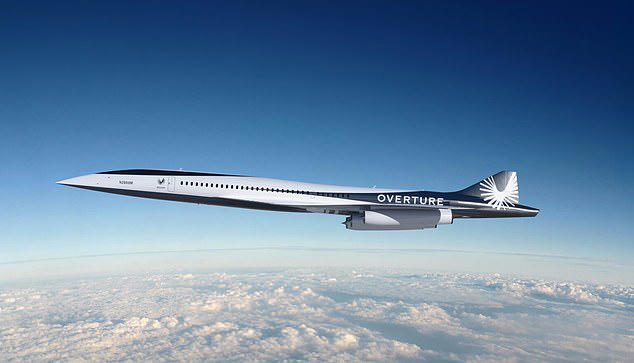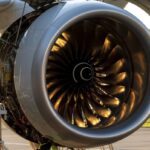
The Comac C949 is a cutting-edge supersonic jet developed by China, designed to exceed the range of the legendary Concorde by 50% and aimed at revolutionizing commercial air travel. Unveiled in the 21st century, the C949 represents China’s commitment to re-entering the supersonic market after decades of absence following the Concorde’s retirement. With its emphasis on modern technological advancements, the C949 seeks to address key challenges faced by earlier supersonic aircraft, particularly in noise reduction and fuel efficiency, amidst increasing regulatory scrutiny on environmental impact and operational costs.
In comparison to the Concorde, which became notorious for its loud sonic booms and high operating expenses, the C949 is engineered to operate with a noise level that is reportedly 95% lower than that of its predecessor. This significant improvement in acoustics is intended to mitigate the criticisms that plagued the Concorde’s operations, particularly over land.
Furthermore, the C949 incorporates advanced engine technologies designed to enhance fuel efficiency, making it a potentially more sustainable option for airlines seeking to cater to a broader market without sacrificing performance.
Historically, the Concorde was a symbol of innovation but also faced commercial challenges due to its high costs and limited profitability, primarily serving affluent passengers. The C949 aims to learn from these lessons by targeting improved economic viability, expanding operational range, and reducing maintenance costs, thereby making supersonic travel accessible to a wider audience.
As global interest in supersonic travel resurfaces, the development of the C949 underscores the evolving demands for air travel in the 21st century, balancing speed, efficiency, and environmental considerations as it seeks to carve out a new niche in the aviation industry.
China Supersonic Jet C949
The Comac C949 is a newly unveiled supersonic jet developed by China, boasting a range that exceeds that of the iconic Concorde by 50%.
This innovative aircraft represents a significant advancement in the quest for faster commercial air travel, leveraging modern technologies and designs to address the challenges faced by previous supersonic models.
Technical Innovations
The C949 aims to incorporate several innovations that were not present in Concorde, particularly in areas concerning noise reduction and fuel efficiency. These enhancements are crucial given the stringent regulations on atmospheric emissions and noise pollution that have been established since the new millennium.
The advancements in engine technology are particularly noteworthy, as the C949’s engines are designed to achieve significantly better fuel efficiency compared to Concorde’s Olympus 593 engines, which faced criticism for their high operating costs.
Historical Context

Following the retirement of Concorde, there was a notable absence of supersonic passenger aircraft for several decades. Various studies and proposals were explored to create a next-generation supersonic airliner that could meet contemporary environmental standards and economic viability. The unveiling of the C949 reflects China’s ambition to fill this gap in the market and capitalize on the lessons learned from Concorde’s operational history, which was marked by its high costs and limited profitability despite its technical achievements.
Economic Considerations
One of the primary challenges faced by supersonic jets, including Concorde, was their economic sustainability. The Concorde primarily catered to affluent passengers, but the high costs of operation, including fuel consumption and maintenance, often outweighed the revenue generated from flights.
The C949 aims to overcome these issues by increasing its operational range and reducing overall operational costs, making it a more viable option for airlines.
Comparison with Concorde
The China supersonic jet C949 is being engineered with significant advancements compared to the historic Concorde, which served as a benchmark for supersonic travel. One of the notable differences is in noise levels; the C949 aims to operate at a noise level that is 95% lower than that of the Concorde, which was infamous for its loud sonic boom, often reaching 105-110 decibels
This improvement in acoustics could address one of the primary criticisms that surrounded the Concorde’s operation, particularly over land. In terms of design and technology, the Concorde program required exceptional resources, including the development of new materials capable of withstanding high temperatures, and it saw the introduction of the first numerically controlled milling machines in production
The C949 incorporates modern technological innovations that reflect the advancements made since the Concorde era, such as a movable fuel system that can hold up to 42,000 kg of fuel, enhancing operational efficiency and range
Furthermore, while the Concorde was a symbol of Franco-British pride and showcased their technological superiority, it faced criticism regarding its size and speed, especially when compared to American designs advocating for Mach 3 capabilities
The C949 aims to strike a balance between speed and efficiency without falling into the traps of the past, learning from Concorde’s operational challenges and public perception. Ultimately, the C949 is positioned not just as a competitor to Concorde but as a response to the evolving needs of air travel in the 21st century, focusing on sustainability, noise reduction, and modern aerodynamics to pave the way for a new era of supersonic flight.
Current Status and Future Prospects
Following the cessation of Concorde’s operations, various studies have been initiated regarding the development of future supersonic aircraft, including China’s C949 project. These studies focus on integrating innovative technologies to meet new environmental regulations that have emerged since the turn of the millennium. Specifically, the regulations address noise levels and atmospheric emissions, which are critical concerns for the aviation industry today
The development of a new generation of supersonic aircraft is not only contingent on adhering to these regulations but also on enhancing profitability. Key requirements include increasing the aircraft’s range, reducing fuel consumption, and lowering maintenance costs. Despite significant research efforts, studies on a successor to Concorde have yet to yield a finalized design or operational model
In the historical context, the original Concorde program exemplified a high level of innovation and technical challenge, requiring over a decade of extensive research and nearly 5,000 hours of flight development. However, the Concorde ultimately faced commercial challenges due to high operating costs and rising environmental concerns, which contributed to its eventual discontinuation
Today, as nations and manufacturers explore the possibility of supersonic travel, the lessons learned from Concorde’s commercial failure underscore the importance of prioritizing environmental impact alongside technological advancement. The future of supersonic travel, particularly with initiatives like the C949, hinges on balancing these factors effectively to capture a market that is both innovative and environmentally conscious.
By – Aeropeep Team






